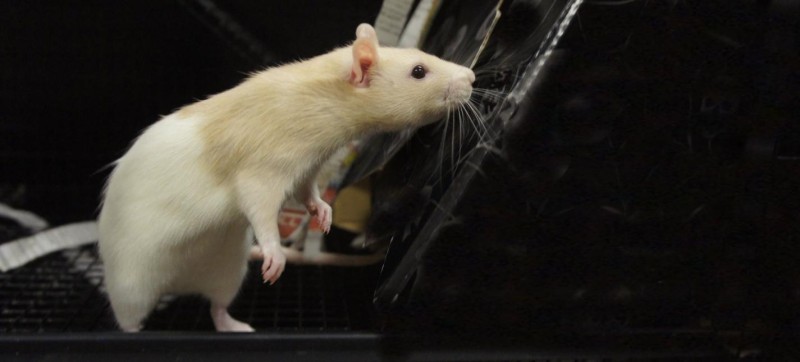Norway Rat - Rattus norvegicus

Habitat:
Native to forest and brushy areas. They now find it preferable to be with the human populations.
Range:
Can be found on every continent but Antarctica. They are originally from east Asia and Japan.
Activity Cycle:
Nocturnal
Features:
The nose is blunt, the ears are small, close set and do not reach the eyes when pulled down. The tail is scaly, semi-naked and shorter than the head and body combined. When distinguishing the Norway rat from the Roof rat, pull the tail back over the body. The tail of the Roof rat will reach the nose. The tail of the Norway rat will not reach beyond the ears.
Size:
Adults usually get to be about 1-2 lbs
Social Structure:
Social animals that breed in very large groups. The groups are typically male dominated.
Life Expectancy:
About 2-4 years in captivity
Diet:
Norway rats will eat nearly any type of food. When given a choice, they select a nutritionally balanced diet, choosing fresh, wholesome items over stale or contaminated foods. They prefer cereal grains, meats and fish, nut, and some types of fruit. Rats require 1/2 to 1 ounce of water daily when feeding on dry foods but need less when moist foods are available. Food items in household garbage offer a fairly balanced diet and also satisfy their moisture needs.
Reproduction:
There are 2-14 young born (average of 8). The parental care is provided by the females. They nest communally with many litters occupying the same nest. Litters are born 21 to 23 days after conception. Newborn rats are naked and their eyes are closed, but they grow rapidly. They can eat solid food at 2 1/2 to 3 weeks. They become completely independent at about 3 to 4 weeks and reach reproductive maturity at 3 months of age, sometimes as early as 8 weeks. Female Norway rats may come into heat every 4 or 5 days, and they may mate within a day after a litter is born. The average female rat has 4 to 6 litters per year and may successfully wean 20 or more offspring annually.
Status:
Are of little concern in the wild according to the IUCN
Interesting Facts:
- Rats have poor eyesight beyond three or four feet, relying more on their hearing and their excellent senses of smell, taste and touch. Norway rats are very sensitive to motion up to 30-50 feet away. They are considered essentially colorblind.
- Norway rats use hearing to locate objects to within a few inches. This highly developed sense (combined with their touch sensitivity) can pinpoint someone rolling over in bed to a six inch area. The frequency range of their hearing (50 kilohertz or more) is much higher than that of humans (about 20 kilohertz.)
- Norway rats have a highly developed sense of touch due to very sensitive body hairs and whiskers which they use to explore their environment. Much of a rodent’s movement in a familiar area relies heavily on the senses of touch and smell to direct it through time-tested movements learned by exploration and knowledge of its home range. Rodents prefer a stationary object on at least one side of them as they travel and thus commonly move along walls, a fact which is very useful when designing a control program.
- Unintentionally introduced to North America by settlers who arrived on ships from Europe. First introduced into the United States about 1775, this rat has now spread throughout the contiguous 48 states.
Prices
- Adult (13 and over)$12.50
- Child (2 - 12)$9.00
- Child (1 and Under)FREE
- Senior (65+)$11.50
- Active Military$11.50
We begin transferring animals to evening (off exhibit) holding at 4:30 each night.
Find Us
2320 N. Prospect Rd.
Peoria, IL 61603
Phone: 309-686-3365
Open Daily 10:00-5:00
Last admission at 4:30
